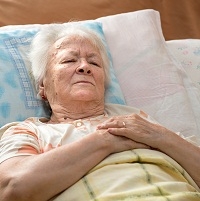Along with joint pain and swelling, about four out of 10 people with RA have related problems in other body parts, says Eric Matteson, MD, professor of medicine and chair of the department of rheumatology at Mayo Clinic, in Rochester, Minn. RA can decrease life expectancy, but “with modern therapies, we are seeing less rheumatoid disease outside of the joints, and patients are living longer,” he says.
Here, 10 different body parts, how they're affected by RA, and what helps the symptoms.
1. Joints
What happens: Rheumatoid arthritis often starts in the small joints of the hands and feet but can progress to other parts of the body. Pain is often worse in the morning and is sometimes symmetrical (you have it in both hands, for example).
What helps: There are numerous medications that can help, and most aim to temper the immune system. Choices include chemotherapy, and anti-rheumatic and anti-inflammatory medications.
"The most important concept about the medications we have today is that when we recognize and diagnose RA, we start therapy as soon as we know what is going on," Dr. Matteson says.
2. Heart
What happens: People with RA have twice the risk of having a heart problem as those without it, according to Dr. Matteson.
The condition creates a chronic, low-grade inflammation that damages blood vessels and increases the risk of heart attack, stroke, heart disease, and heart failure, he says.
RA can also cause the pericardium, the sac-like structure around the heart, to become inflamed. This complication can produce sharp chest pain and fever, and if left untreated, can lead to thickening and scarring of the pericardium.
What helps: The treatment for heart problems and most other RA complications is to reduce inflammation through medication. If problems progress, a pacemaker may be necessary.
3. Lungs
What happens: Up to 10% of RA patients develop serious lung problems. The most common conditions are inflammation in the lungs' lining (pleurisy), which causes pain when breathing; scarring of the tissue in the lungs (pulmonary fibrosis); and an increased chance of emphysema, even in nonsmokers.
What helps: The best treatments are those that reduce the underlying inflammation.
4. Mood
What happens: People with chronic diseases, including RA, are more likely to experience depression or other mood disorders—it's a common and understandable occurrence, Dr. Matteson says.
Chronic inflammation is also associated with abnormalities of neurotransmitters and hormones that can affect how a person feels, he adds.
What helps: If people are depressed or have significant mood changes, antidepressants can be used to treat the symptoms, according to Dr. Matteson.
5. Blood vessels
What happens: Vasculitis occurs when blood vessels become inflamed, narrowed and blood flow is reduced. Dr. Matteson says this can block blood flow in areas like the arms, legs, and nerves. Vasculitis can sometimes lead to coronary artery disease, he adds.
What helps: If blood vessels narrow significantly, patients may need to take steroids or undergo certain types of chemotherapy, which help reduce inflammation and tissue damage.
6. Nerves
What happens: Some RA patients get peripheral neuropathy, or nerve damage, that causes a burning and numbness in the feet and hands. Also, when blood vessels become inflamed, the nerves don't have an adequate blood supply, which can result in further nerve damage.
What helps: The best approach is to reduce the underlying inflammation and use medications that treat the neuropathy itself, according to Dr. Matteson.
7. Eyes
What happens: Inflammation can also occur in various parts of the eye—a "devastating complication that can cause blindness," Dr. Matteson says. Problems occur in the eye's iris (uveitis), the white of the eye (scleritis), and the membrane covering the white part (episcleritis). Symptoms include blurred vision, pain, redness, and light sensitivity. Inflammation can also increase the risk of glaucoma and cataracts.
What helps:Eye drops that contain anti-inflammatory medications are used to treat most rheumatoid arthritis–induced eye conditions.
8. Skin
What happens: If there is inflammation in the blood vessels going to the skin, it can create rashes, skin ulcers, and nodules or skin bumps, especially on the hands, feet, and elbows. Matteson says the bumps may come and go, and physicians don't know what causes them.
What helps: Your doctor can help by treating the underlying RA condition. Surgical removal of the nodules is also an option.
9. Wrists
What happens: Inflammation in the joints pushes on the nerve that runs from the forearm to the wrist and causes carpal tunnel syndrome. People with carpal tunnel usually feel numbness, tingling, weakness, and eventually sharp pain in the arm.
What helps: Treating the underlying inflammation, resting or immobilizing the sore wrist with a splint, and applying cool packs. If the problem is persistent and problematic, consider surgery.
10. Spleen
What happens: Some people with RA get Felty's syndrome, a condition in which the spleen becomes enlarged and the white blood cell count drops, making them more susceptible to infections. But because RA can be controlled relatively well, Dr. Matteson says this complication is unusual, affecting less than 1% of RA patients.
What helps: Treatment of the underlying RA condition, and, if necessary, administering injections to increase the white blood cell count.
Source: Health.com







